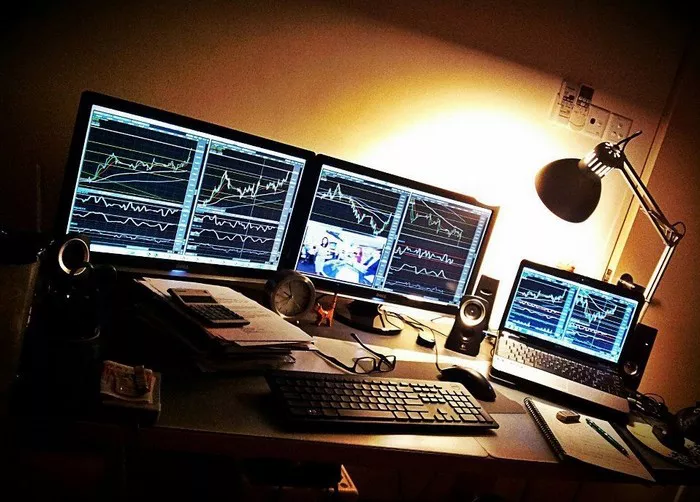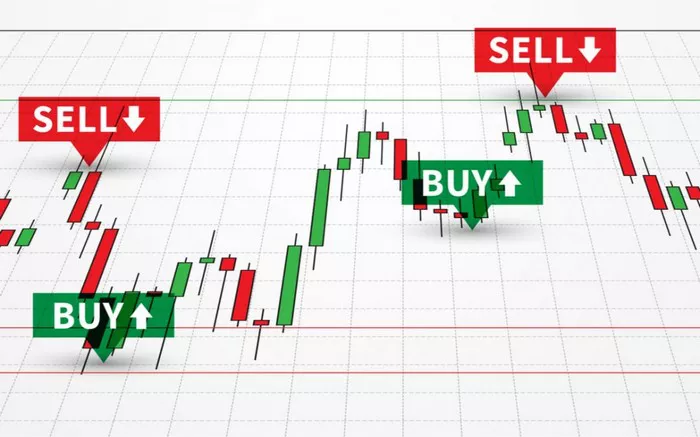Entering the world of forex trading can be both exciting and challenging. The first step in your trading journey is to open a forex trading account, which provides access to the foreign exchange market. However, choosing the right account and broker, understanding the process, and setting yourself up for success requires careful consideration. This article will guide you through 8 essential tips on how to open a forex trading account, ensuring that you start your trading journey on the right foot.
Understanding Forex Trading Accounts
Before diving into the tips, it’s important to grasp the basics of what a forex trading account is. A forex trading account is an account that allows you to trade currencies on the foreign exchange market. It acts as a platform where you can buy and sell currency pairs, manage your positions, and monitor your trading activities. Different brokers offer various types of accounts, each with its own features, requirements, and benefits.
Tip 1: Research and Choose a Reputable Forex Broker
The first and most crucial step in opening a forex trading account is selecting the right broker. Your broker will be your gateway to the forex market, so it’s essential to choose one that is reputable, reliable, and aligns with your trading needs.
Evaluate Regulatory Compliance
Ensure that the broker you choose is regulated by a reputable financial authority. Regulatory bodies such as the Financial Conduct Authority (FCA) in the UK, the Australian Securities and Investments Commission (ASIC), or the Commodity Futures Trading Commission (CFTC) in the US enforce strict guidelines to protect traders from fraud and ensure fair practices. A regulated broker provides an additional layer of security and peace of mind.
Consider Broker Reputation
A broker’s reputation speaks volumes about their reliability and trustworthiness. Research online reviews, trader forums, and financial news sources to gauge the broker’s standing in the industry. Pay attention to feedback regarding customer service, withdrawal processes, and trading conditions. A broker with a strong, positive reputation is more likely to offer a smooth trading experience.
Tip 2: Understand the Types of Forex Trading Accounts
Forex brokers typically offer various types of trading accounts, each designed to cater to different types of traders. Understanding these account types will help you choose the one that best suits your trading style and goals.
Standard Accounts
Standard accounts are the most common type of forex trading account. They offer access to standard lots, which is the equivalent of 100,000 units of the base currency. Standard accounts often come with higher minimum deposit requirements and are ideal for experienced traders with significant capital.
Mini and Micro Accounts
For those with less capital or those who prefer to trade smaller positions, mini and micro accounts are available. A mini account allows you to trade in 10,000 units of the base currency, while a micro account allows trading in 1,000 units. These accounts are ideal for beginners who want to practice trading with less risk.
VIP and Premium Accounts
Some brokers offer VIP or premium accounts for high-net-worth individuals or professional traders. These accounts often come with additional perks such as lower spreads, dedicated account managers, and exclusive access to trading tools. However, they also require a higher initial deposit.
See Also: 7 Factors that Control the Foreign Exchange Market
Tip 3: Prepare the Necessary Documentation
When opening a forex trading account, you will be required to submit certain documents to verify your identity and comply with regulatory requirements. Preparing these documents in advance will streamline the account opening process.
Proof of Identity
Most brokers require a valid form of identification, such as a passport, driver’s license, or national ID card. The document should be current, clearly display your full name, and include a recognizable photo.
Proof of Address
In addition to proof of identity, you will need to provide proof of address. This can be a recent utility bill, bank statement, or official government correspondence that shows your name and address. The document should be dated within the last three months.
Financial Information
Some brokers may ask for financial information, such as your employment status, income level, and trading experience. This information helps brokers assess your suitability for trading and recommend the appropriate account type and trading conditions.
Tip 4: Decide on the Base Currency of Your Account
The base currency of your forex trading account is the currency in which all your trades, profits, and losses will be denominated. Choosing the right base currency is important as it can affect your trading costs and ease of account management.
Consider Your Home Currency
If you plan to deposit and withdraw funds in your home currency, it makes sense to choose it as your account’s base currency. This will help you avoid conversion fees and simplify your account management. However, if you frequently trade certain currency pairs, you might consider using one of those currencies as your base.
Think About Transaction Costs
If your base currency differs from the currency you often trade or deposit in, you may incur additional conversion fees. To minimize these costs, choose a base currency that aligns with your trading strategy and currency preferences.
Tip 5: Understand Leverage and Margin Requirements
Leverage and margin are powerful tools in forex trading, allowing you to control larger positions with a smaller amount of capital. However, they also increase risk, making it essential to understand how they work before opening an account.
Know the Leverage Offered
Different brokers offer varying levels of leverage, typically ranging from 1:10 to 1:500. While higher leverage can amplify your profits, it also increases your potential losses. Choose a leverage level that aligns with your risk tolerance and trading strategy.
Understand Margin Requirements
Margin is the amount of money required to open a position. Brokers will specify the margin requirement as a percentage of the total trade size. For example, a 1% margin requirement means you need to deposit $1,000 to open a $100,000 position. Ensure you understand the broker’s margin policies and how they affect your trading capital.
Tip 6: Fund Your Account
Once your account is set up, the next step is to fund it. The funding process varies by broker, but most offer multiple methods for depositing funds into your trading account.
Choose a Convenient Funding Method
Common funding methods include bank transfers, credit/debit cards, and electronic payment systems like PayPal or Skrill. Choose a method that is convenient for you, considering factors such as processing time, fees, and availability in your region.
Consider the Minimum Deposit Requirement
Different brokers have different minimum deposit requirements, which can range from as low as $50 to several thousand dollars. Ensure you are comfortable with the required deposit amount, and never invest more than you can afford to lose.
Tip 7: Familiarize Yourself with the Trading Platform
The trading platform is where you will execute all your trades, so it’s crucial to familiarize yourself with its features and functionality before you start trading.
Explore the Platform’s Features
Most brokers offer demo accounts that allow you to practice trading with virtual funds. Use this opportunity to explore the platform’s features, including charting tools, order types, and risk management tools. Ensure the platform is user-friendly, reliable, and suits your trading style.
Test the Platform’s Speed and Performance
In forex trading, speed is critical. Delays in order execution can lead to missed opportunities or losses. Test the platform’s speed and performance during different market conditions, and ensure it can handle high-volume trading without glitches or delays.
Tip 8: Understand the Broker’s Fee Structure
Forex brokers earn money through spreads, commissions, and various fees. Understanding these costs is essential, as they can significantly impact your profitability.
Evaluate Spreads
The spread is the difference between the bid and ask price of a currency pair. Brokers may offer fixed or variable spreads, depending on market conditions. Lower spreads reduce your trading costs, especially if you trade frequently or in large volumes.
Check for Hidden Fees
In addition to spreads, be aware of other fees such as withdrawal fees, inactivity fees, or overnight swap rates. Ensure you fully understand the broker’s fee structure to avoid any surprises and to calculate your potential profits accurately.
Conclusion
Opening a forex trading account is a crucial step in your journey as a forex trader. By following these eight tips—researching and choosing a reputable broker, understanding account types, preparing necessary documentation, deciding on a base currency, understanding leverage and margin, funding your account, familiarizing yourself with the trading platform, and understanding the broker’s fee structure—you can set yourself up for a successful trading experience.
Remember, forex trading involves significant risk, and it’s important to educate yourself, practice with a demo account, and only trade with money you can afford to lose. With the right preparation and careful planning, you can navigate the forex market confidently and achieve your trading goals.
Related topics:

































